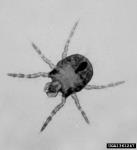COLUMBIA, Mo.– Homeowners looking forward to a lush, green lawn this spring and summer should take care not to overdo it, says a University of Missouri Extension turfgrass specialist.
That goes for mowing, fertilizing, watering and applying herbicides. Good lawn-care practices can have bad results if not done at the right time, at the right frequency and in the right amount, says Brad Fresenburg.
Many homeowners who put fertilizer on their lawns every spring are rewarded with fast growth and rich green color. But after that spurt of growth, an overfertilized lawn may be more vulnerable to disease and less able to withstand the stresses of heat, drought and pests.
“We don’t recommend just making random applications of fertilizer without knowing what the nutrient needs of the lawn are,” Fresenburg said. “Soil testing tells the homeowner the nutrient needs of the lawn.”
Soil tests are available through county MU Extension centers for a nominal fee. Soil test reports include specific recommendations for applying fertilizer, lime and other amendments based on what you are growing, whether it’s turfgrass, vegetables, flowers or trees. For more information, contact the MU Extension center in your county or go to soilplantlab.missouri.edu/soil.
If you have thin spots in the lawn that you want to over-seed with new grass, Fresenburg recommends doing that by mid-March so seedlings are established in time to compete against weeds. To ensure good soil-seed contact, scratch up the surface with a garden rake or power rake to prepare a seedbed.
“Then sprinkle the seed in that thin area and rake it in lightly,” he said.
Getting seedlings established early is especially important if you plan to combat weeds with a pre-emergent herbicide. Pre-emergents prevent seeds from germinating, and they generally don’t discriminate between the seeds of weedy plants and those of the plants you’re trying to grow.
“If you can get at least one mowing on that new seedling grass, that’s generally considered established enough to use a pre-emergent herbicide,” he said. “If it looks like your seed is not going to germinate and establish well enough, you may have to hold off on that pre-emergent until next year.”
A traditional rule of thumb for pre-emergents in spring is to apply when forsythias are in bloom, but many homeowners who did that last year missed the best time for control of crabgrass and other summer annual weeds. For proper timing, soil temperature is your best indicator, Fresenburg said.
“We generally recommend pre-emergent herbicides going down when soil temperatures reach 55 degrees in the surface for about five consecutive days,” he said.
You can determine this simply by pushing a thermometer into the top inch of soil. Daily soil temperatures at sites across the state are available at agebb.missouri.edu/weather/reports/soilTemp2.asp.
Some pre-emergents herbicides also contain fertilizer. If overfertilization is a concern, Fresenburg suggests looking for an herbicide-only product.
While some might be tempted to cut their grass short so they won’t have to mow as often, Fresenburg notes that letting grass grow higher creates a canopy that deprives upstart weeds of light and space.
“Weeds are basically there due to a lack of competition from the lawn,” he said. “If homeowners can maintain a healthy, dense lawn and mow at 3 1/2 to 4 inches, they can reduce summer annual weed populations up to 80 percent without the use of a pre-emergent. Also, a corn-gluten-based organic fertilizer can provide up to 60 percent control of summer annual weeds, and in combination with the taller, dense lawn, homeowners can expect nearly 100 percent control.”
Despite concerns about ongoing drought, homeowners shouldn’t be too quick to pull out the garden hose, Fresenburg said. If you let the soil dry slightly and the grass wilt a little in spring, a deeper and hardier root system will develop. Lawns with good root systems will need less water, leaving them better equipped to endure drought and less vulnerable to disease and insect pests.
Brown patches in your lawn don’t necessarily mean the grass is thirsty or needs fertilizer, he said. It could be a sign of disease, such as brown patch, a fungal blight common on tall fescue. Fungi thrive when moisture and nitrogen are plentiful, so watering or fertilizing might just make things worse.
Related MU Extension publications available for free download:
More publications, articles and resources on lawn care are available at www.extension.missouri.edu/grasses.
Read more http://extension.missouri.edu/news/DisplayStory.aspx?N=1728






